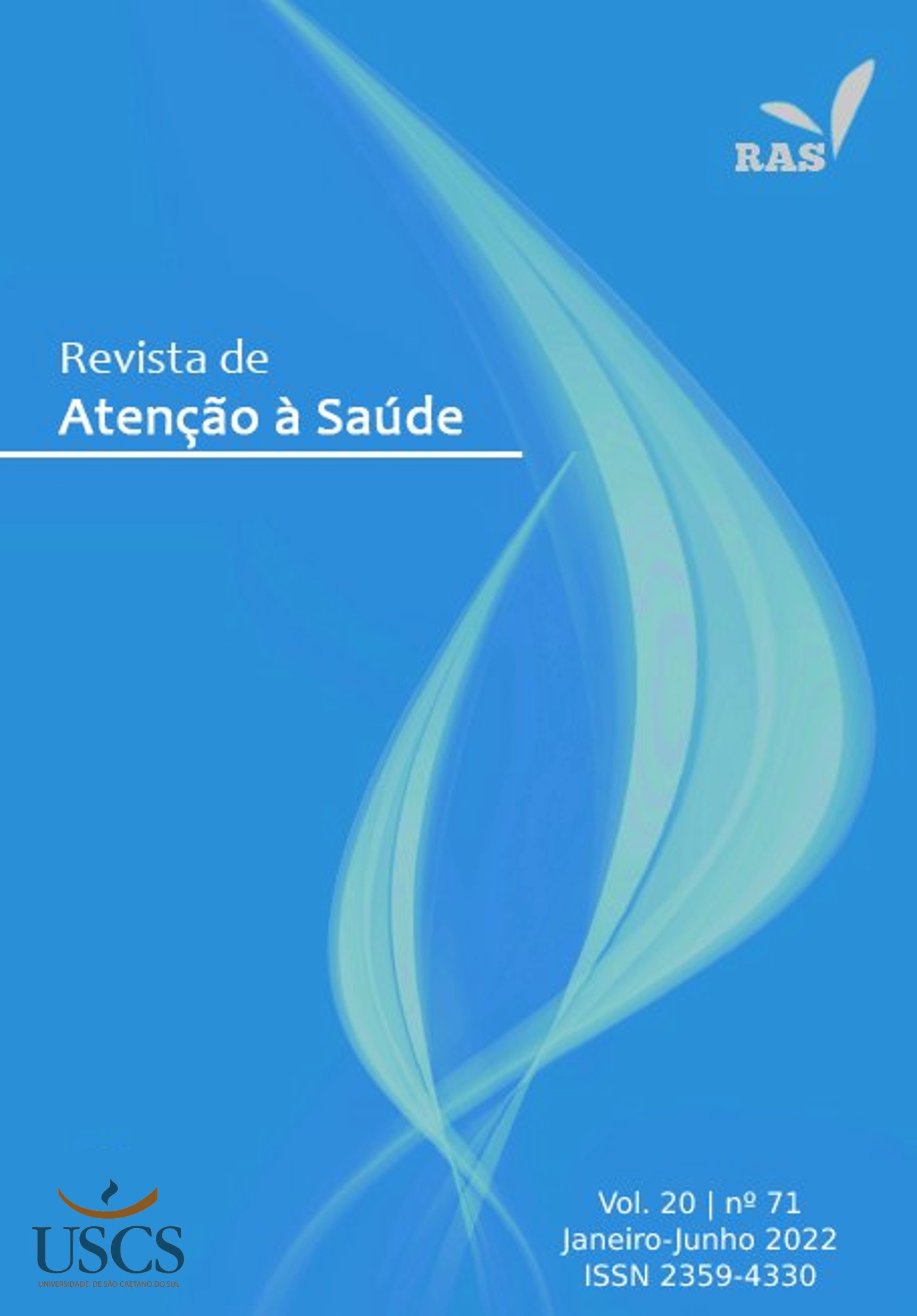EVALUATION OF HEALTH SERVICES AND MATERIAL RESOURCES FOR CERVICAL CANCER SCREENING IN OURO PRETO – MG
Health services and material resources in cervical cancer screening
DOI:
https://doi.org/10.13037/2359-4330.8251Keywords:
Uterine Cervical Neoplasms, Health Services, Health InfrastructureAbstract
The periodic Pap smear is the conventional method in Brazil for cervical cancer (CC) screening. Service strategies and material resources in the primary health centers (HC) are fundamental aspects that reflect on the quality of the screening program. Objective: To analyze four primary HC in the city of Ouro Preto, Minas Gerais and verify the local context of CC screening. Methods: A qualitative study was conducted by means of semi-structured interviews with nurses and community health agents (CHA) from the four selected UBS. Results: It was observed that only one HC had adequate physical plant and material resources to carry out the exam. In general, the CHA carried out non-systematized active search of patients to undergo the Papanicolaou test. The procedure for informing patients of altered results was similar between the UBS, however, there was no standardization for following up on altered cases. Furthermore, educational activities were scarce for the community and the work team. Conclusion: It is noticed that a quality physical structure associated with a well-trained work team promotes the establishment of successful screening programs. As it is not a reality of all local HC, it becomes necessary to implement organizational principles to systematize the strategies for active search, registration and monitoring of patients, with the CHA being fundamental in this process, due to their proximity to the population
Downloads
References
Instituto Nacional do Câncer – INCA. Controle do câncer do colo do útero - Conceito. 2021. Disponível em: https://www.inca.gov.br/controle-do-cancer-do-colo-do-utero/conceito-e-magnitude. Acesso em: 13.07.2021.
Brasil. Instituto Brasileiro de Geografia e Estatística. Censo demográfico 2010. Disponível em: http://cidades.ibge.gov.br/brasil/mg/ouro-preto/panorama. Acesso:07.06.2020.
Tomasi E. et al. Estrutura e processo de trabalho na prevenção do câncer de colo de útero na Atenção Básica à Saúde no Brasil: Programa de Melhoria do Acesso e da Qualidade – PMAQ. Revista Brasileira de Saúde Materno Infantil. 2015; 5 (2): 171-180.
Onyenwenyi AOC, Mchunu GG. Primary health care workers’ understanding and skills related to cervical cancer prevention in Sango PHC centre in south-western Nigeria: a qualitative study. Primary Health Care Research & Development. 2019; 20: 93.
Meira KC. et al. Analysis of the effects of the age-period-birth cohort on cervical cancer mortality in the Brazilian Northeast. Plos One. 2020; 15(2).
Barcelos MRB. et al. Quality of cervical cancer screening in Brazil: external assessment of the PMAQ. Revista de Saúde Pública. 2017; 51: 67.
Lopez MS. et al. Cervical cancer prevention and treatment in Latin America. Jornal of Surgical Oncology. 2017; 115(5): 615-618.
Wakabayashi R. et al. The Host-Microbe Interplay in Human Papillomavirus-Induced. Carcinogenesis Microorganisms. 2019; 7(7): 199.
Navarro C. et al. Cervical cancer screening coverage in a high-incidence region. Revista de Saúde Pública. 2015; 49.
Franco DN. et al. Screening cervical cancer by the Pap test – relevance of age aanges recommended by the Brazilian Programme for Prevention and Control. Asian Pacific Journal of Cancer Prevention. 2017; 18(9): 2431-2435.
Finocchario-Kessler S. et al. Cervical cancer prevention and treatment research in Africa: a systematic review from a public health perspective. BMC Womens Health. 2016; 16.
Acera A. et al. Increasing Cervical Cancer Screening Coverage: A Randomised, Community-Based Clinical Trial. Plos One. 2017; 12(1).
Wang SX. et al. A preliminary cervical cancer screening cascade for eight provinces rural Chinese women: a descriptive analysis of cervical cancer screening cases in a 3-stage framework. Chinese Medical Journal. 2019; 132 (15): 1773-1779.
Kessler TA. Cevical Cancer: Prevention and Early Detection. Seminars in Oncology Nursing, Elsevier. 2017; 33(2):172-183.
Silva RCG. et al. Perfil de mulheres com câncer de colo do útero atendidas para tratamento em centro de oncologia. Revista Brasileira de Saúde Materno Infantil. 2018; 18 (4).
Donatus L. et al. Assessing the uptake of cervical cancer screening among women aged 25-65 years in Kumbo West Health District, Cameroon. Pan African Medical Journal. 2019; 33.
Getachew S. et al. Cervical cancer screening knowledge and barriers among women in Addis Ababa, Ethiopia. Plos One. 2019; 14(5).
Kurt G; Akyuz A. Evaluating the Effectiveness of Interventions on Increasing Participation in Cervical Cancer Screening. The Journal of Nursing Research. 2019; 27(5).
Musa J. et al. Effect of cervical cancer education and provider recommendation for screening on screening rates: A systematic review and meta-analysis. Plos One. 2017; 12(9).
Zulu JM. et al. Integrating national community-based health worker programmes into health systems: a systematic review identifying lessons learned from low-and middle-income countries. BMC Public Health. 2014; 14: 987.
Downloads
Published
Issue
Section
License
Copyright (c) 2022 Renata Rocha e Rezende Oliveira, Giselle Aparecida de Souza Rezende, Bruna Viana Silva , Ana Luiza Lage, Bruna Aparecida Martins, Marco Antônio Veloso, Bruna Albuquerque Geöcze, Ronan David Souza Abreu, Mariana Trevisan Rezende, Cláudia Martins Carneiro

This work is licensed under a Creative Commons Attribution-NonCommercial-NoDerivatives 4.0 International License.
Policy Proposal for Journals offering Free Delayed Access
Authors who publish in this magazine agree to the following terms:
- Authors maintain the copyright and grant the journal the right to the first publication, with the work simultaneously licensed under a Creative Commons Attribution License after publication, allowing the sharing of the work with recognition of the authorship of the work and initial publication in this journal.
- Authors are authorized to assume additional contracts separately, for non-exclusive distribution of the version of the work published in this magazine (eg, publishing in institutional repository or as a book chapter), with the acknowledgment of the authorship and initial publication in this journal.
- Authors are allowed and encouraged to publish and distribute their work online (eg in institutional repositories or on their personal page) at any point before or during the editorial process, as this can generate productive changes, as well as increase impact and citation of the published work (See The Effect of Open Access).









